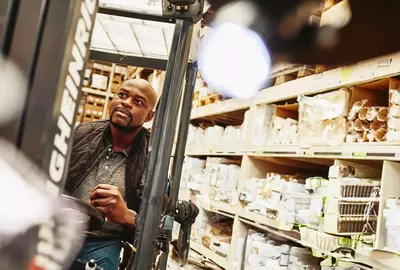In any industry, attracting top talent starts with selling the role in the most effective way possible. Key to that is creating a compelling job description. For hiring managers in the logistics industry, which has gone through numerous upheavals in recent years, this is more essential than ever. If you’re wondering how to write a logistics job description that draws the strongest candidates, read on.
Even before the pandemic, logistics businesses were having to work hard to keep up with trends such as the digital transformation of the sector. This has been driven by technologies like:
- machine learning
- cloud services
- the Internet of Things
- blockchain
Amid the fast-moving trends that have defined the logistics industry recently, it's crucial you're able to acquire high-quality talent. When planning your recruitment strategy, you need to look at the whole talent experience, starting with job descriptions. Get these right, and you’ll engage with the right people who have the skills and qualifications needed to drive your business forward. You’ll also paint an appealing picture of the roles you're recruiting for and what it's like to work for you.
looking for detailed insights to write an attractive job description that draws in logistics talent?
our guide on writing a logistics job description is the resource you need.
download the guidewhat workers want from jobs in logistics
A recent survey of industry leaders found 76 percent of logistics operators are suffering from labour shortages. Not only is this affecting their bottom line, but 58 percent report it’s also negatively impacting their customer service.
With talent hard to find, employers who want to find the best candidates need to think carefully about what people want from jobs in logistics.
Safety and security will be big considerations for many workers. This applies not only to essential health and safety protocols, but also the wider issue of job security during times of economic uncertainty.
Another trend that has influenced what people want and expect from jobs in logistics is digital transformation. Workers are currently witnessing how employers can use automation, robotics and artificial intelligence to carry out tasks previously done by human beings.
In this environment, jobseekers are seeking assurances that employers are committed to helping them advance their careers by giving them opportunities to upskill, reskill and learn new things. They are also looking for roles that have a clearly defined path for development in the future, regardless of how technology evolves and shapes the industry.
creating strong logistics job descriptions
Job descriptions are effectively your shop window. They’re your first opportunity to capture the attention of jobseekers who will quickly move on if there is anything about the description that puts them off.
If you put in the effort to getting this crucial aspect of your recruitment process right, you can show potential applicants you understand their priorities. You can also give a powerful account of your organization and what you have to offer.
To get the best results from your job descriptions, it's essential you avoid common mistakes recruiters make, such as:
- using jargon, slang and language some people might not understand, which will reduce the likelihood they will apply
- simply listing job requirements and demands, rather than trying to paint an attractive picture of the job and why people should want to work for you
- using cliched and unnecessary terms like “highly motivated”
- forgetting to specify details about training, health benefits and other key perks
- writing job descriptions without getting input from relevant stakeholders and subject matter experts
It's also important to be aware of basic best practices in producing and promoting your job descriptions. This includes optimizing your ads for digital environments and communicating with jobseekers on their terms. You should present your roles in a way that highlights how teaming up with you will help workers achieve long-term career growth.
a detailed guide to write compelling job descriptions
Randstad takes a more in-depth look at the importance of high-quality logistics job descriptions in a comprehensive guide, which contains:
- further detail on what jobseekers are looking for in logistics roles
- more mistakes you should be careful to avoid
- more HR hacks to optimize your job descriptions and engage with the right candidates
- a sample logistics coordinator job description that demonstrates recommended practices





